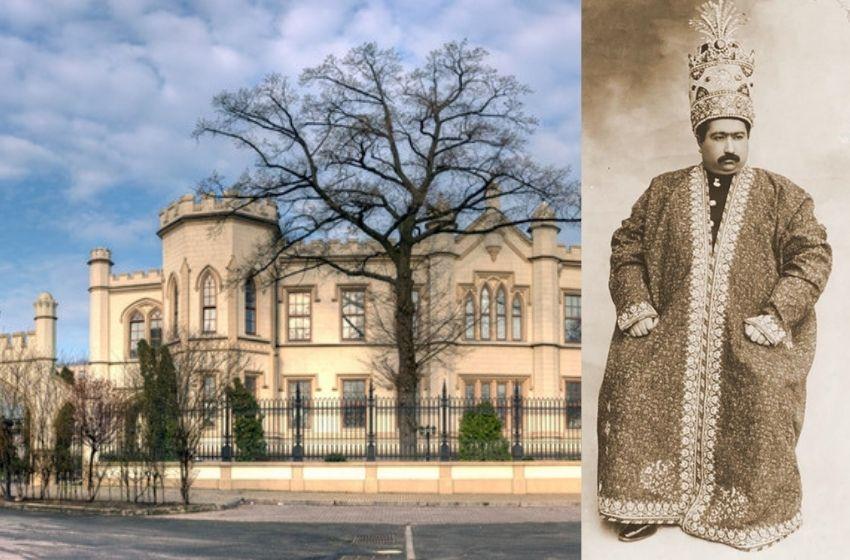In September 1909, the Shah of Persia (today’s Iran) Mohammad Ali arrived in exile in Odessa. And he brought with him his court, his harem of 50 concubines and the rarest jewels of the Shah's treasury.

Shah Mohammad Ali had ascended the throne in January 1907. On accession to the throne, he promised to abide by the Constitution given by his father in 1906, but in fact, he did not.
On February 15, 1908, a bomb was thrown into the Shah's carriage. The monarch was not hurt, but the failed attack made him intransigent. On June 3, fearing another assassination attempt, Mohammad Ali left the palace in Tehran and went to the Shah's country gardens.
On June 24, 1908, the Shah made a coup with the military and political support of Russia and Britain and declared the Constitution abolished because it was contrary to Islamic law. With the help of the Persian Cossack brigade he bombarded and dissolved the Majlis (Persian parliament).
In July 1909, pro-Constitution forces marched from Persia's provinces to Tehran, deposed the Shah, and re-established the Constitution. Mohammad Ali was forced to hide himself in the Russian diplomatic mission. On 16 July 1909, the parliament voted to place on the throne the Shah's 11-year-old son Ahmad. Mohammad Ali abdicated and then accepted to go into exile to Odessa.
The house of a Polish count turned into a Shah's Palace
By the decision of the Russian sovereign, the deposed ruler retained the titles of "Shah" and "Majesty", thereby confirming his royal status. The banished king was offered to settle in Odessa in the building in Gogol Street 2. The foreign royal guest liked the proximity of the house to the sea and the historic city centre.
The first owner of the house was Isidor Zenon Belina-Brzhozovsky, a Polish nobleman. Brzhozovsky family lived in the palace until 1909, and, in the same year, it was leased to the Persian monarch Mohammad Ali. The royal refugee rented the castle until the October Revolution of 1917 (not counting a short break for a military mission to Persia to reclaim the throne, in 1911).
The appearance of the Eastern monarch caused a great excitement in Odessa. The Persian Shah lived for 10 years in exile in Odessa in a palace still called by the Odessans: “Shahskiy (Shah’s) Palaceâ€.
Shah's life in Odessa
In Odessa, Muhammad Ali led an active lifestyle: he visited the hippodrome, theatre, bathhouse, prison. The Odessa press covered literally every step of the Persian Shah. For example, a local newspaper wrote:
Today the former Persian Shah Muhammad Ali examined the prison in detail. He was accompanied by the mayor I.N. Tolmachev, chamberlain G.D. Batyushkov, eunuch and entourage. The former ruler of Persia declared that Russian prisons are more beautiful than Persian palaces.
"Russian Word", issue of November 20, 1909
The banished sovereign was very surprised when he learned that in Russian Empire prisoners were fed at the expense of the treasury.
In my Country their relatives feed them; those who do not have such - they do not eat anything.
Mohammad Ali, Shah of Persia
The royal guest walked around the premises and remained among the convicts for a long time. The detainees answered the Shah's greeting: "We wish you good health, your Majesty." Then, the former shah visited the political prisoners and the women's department, looked at workshops, infirmary, kitchens and tasted prison food.

The unfaithful concubines of the harem thrown out of the window
The curious inhabitants of Odessa, and first of all women, wanted to have a peek at the harem of the Persian Shah. But no one succeeded. And probably for this reason, rumours spread around Odessa that the concubines convicted of infidelity were thrown out of the palace window into the cliff, on the edge of which the building of the royal residence was located.
Officially, the Persian Shah had one wife - Maleken Jahan, the mother of his son Ahmad Shah. Local historians claim that in one of his letters to the English Prime Minister Gladstone, Mohammad Ali either jokingly or seriously wrote that:
It is better to live 50 years with one wife than one year with 50 wives.
Some historical sources reported the harem did not live in the Palace with the Shah, but in the poor district of Peresip.
The daughter of the Shah educated in a Christian gymnasium in Odessa
In 1912, the Shah's daughter Khadija-Khanum had to enter the Odessa Institute for Noble Maidens, founded in 1829 for “maidens of noble rankâ€. However, the charter of this closed female institute did not provide for the admission of pupils of other religions, including Muslim women. The reason for this was that the entire process of upbringing in such educational institutions was based "on the Christian religion", and its direct goal was "to establish faith in God in the hearts of the girls."
The placement of Princess Khadija-Khanum in the local Odessa Institute of Noble Maidens was undertaken personally by the Minister of Foreign Affairs of Russia Sazonov in St. Petersburg. He sent a corresponding request to His Serene Highness Prince Lieven, who ran the office of educational institutions. The letter from the head of the Russian Foreign Affairs Ministry reported, among other things:
Khadija-Khanum, with the permission of his father, visits the dacha of the institute, has breakfast, prepares lessons, drinks tea and dines with the pupils; she impresses everyone around her as lively, observant, cordial, and at the same time treats all activities with great zeal.
During the two months of her visit to the institute (June and July), Khadija-Khanum has become so accustomed to the environment of the institute and shows such a sincere desire to learn that Shah and Shahinya ask to admit her to the initial 7th grade of the institute. The knowledge of the princess is quite consistent with the requirements for admission to this class.
His Majesty Mohammad Ali Shah allowed the princess to spend time with the students of the Institute of Noble Maidens from 11 am to 8 pm. Such a European education for a girl from a Muslim family, even a noble one, was at that time a very unusual phenomenon.
Russian Civil War reaching Odessa
The turmoil of 1917 was approaching inexorably. The former Shah of Persia survived a coup that deprived Nicholas II of his host from power. For some time he remained in Odessa and even organised self-defense.
On December 21, 1917, 20 armed robbers attacked the palace of the Persian Shah Mohammad Ali. However, the Shah was warned of the attack and organised an ambush of the police. So the bandits were met by a gun salvo, which discouraged them from going into the palace.
Viktor Feitel'berg-Blank and Valery Shestachenko, "Banditskaia Odessa"
Shah lived in Odessa until 1920. When the Reds began to approach the city, the poor shah, who had escaped from one revolution, was forced to flee from another; he left for Istanbul. From Turkey, he moved to live in Italy. Mohammad Ali died in April 1924 in San Remo (Italy) at the age of 52.



















